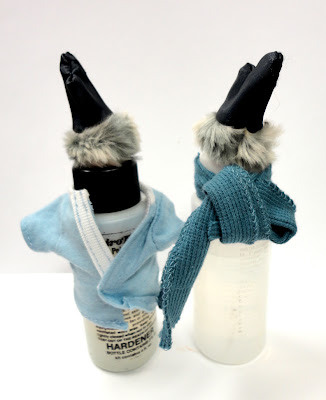Question: I have heard resin does not work in the cold. Can you tell me why?
The Carmi answer is resin would not join a hockey team. Hehehe.
In other words, Envirotex Lite and the ETI line of resins need to be mixed and cured in a warmish room. Envirotex Lite (and all other two-part epoxies) are reactive compounds that require warm temperatures. The absence of heat means that they will not cure. Heat/warmth is the part of the process you control by planning when and where you will be mixing and pouring a batch of resin.
70 degrees Fahrenheit or 21 degrees Celsius at all time please!
Warmer is even better and if you ever have the good fortune to mix resin on your back deck on a hot day you’ll see how how much quicker it gels and cures. When I work indoors in the summer my air conditioner does keep my studio cool. I always leave my desk lamp on in the spot where my resin is curing…sort of like a lamp over eggs if I wanted to hatch a chicks. If your studio is really cool, you might let your projects cure in place overnight and then move them to a sunny window for the final phase of the full 48-hour cure. Your projects will be as hard as glass if you do. If you have ever had cloudy results or resin that took forever to cure this might be the reason why.
So, here are my final tips:
70 -80F degrees or 21-26 C is best for mixing, pouring and curing resin projects.
80F or 26C is the maximum. Any hotter and your results will be mixed.
(These temperatures apply to coating, puttys and clays too.)
So when you think resin, think warm thoughts.
The scientific answer from the company is much better though. The issue is crystallization. Due to the purity of EnviroTex resin, a clouding or settling of the resin may occur in extremely cold conditions. Should this “clouding” occur, place resin (there are two bottles in the kit, one marked resin and one marked hardener) container in hot water until resin clears. Allow resin to return to room temperature (approximately 70 F or 21c) before mixing with EnviroTex hardener. This condition will only happen on the resin side. You may need to repeat these steps.
Just like honey.
Crystallization is a natural occurring phenomenon and is not a reflection of the quality of the product. When you move resin from cold to warm or warm to cold you are shocking it. It's just like when I put my honey in the fridge. When I take it out it appears solid and white....but left on the warm counter for a while it returns to it's liquid golden state. Keep your resin stored indoors in a nice, warm and dry cupboard.Labels: Resin Facts, Tips
